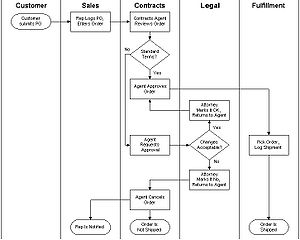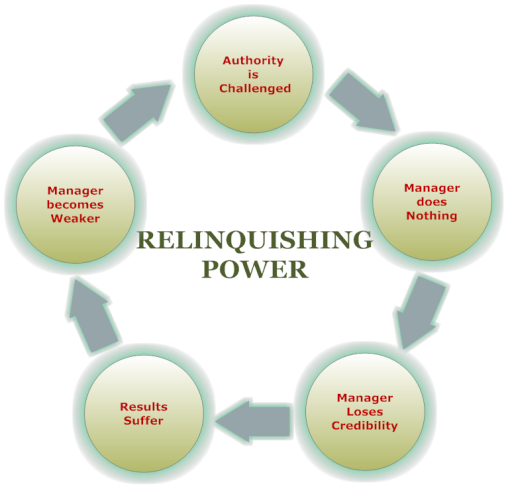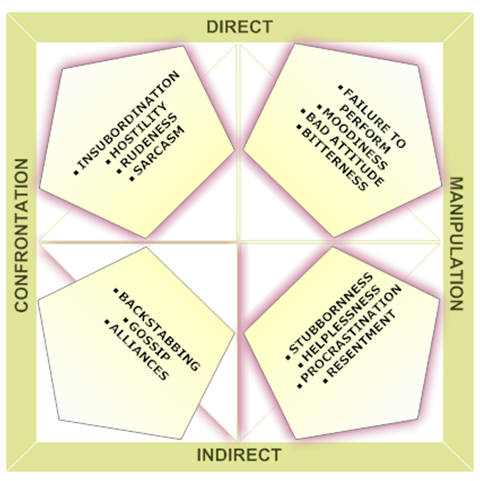Multitudes of career climbing Managers are absolutely obsessed with the mentation of securing the Credit for an Idea. These grasping self-image constructors maneuver situations, twist conversations, compose politics, and employ devious tactics, to insure they receive the credit “they deserve”; all in the name of their own fair play. They are convinced and believe their ideas are uniquely exceptional to the pool of creative
thought and without their brilliant sentiments the organization would be immovable in its own mire. At best they are braggarts; at worst self-centered egotist set on marginalizing everyone around them. Focused on “scoring points” as their primary “get ahead” strategy they calculate moves like a Chess master purposefully moving pieces into play. Their intent of gaining the advantage and capture of “credit for the idea” sets up a win-lose game in which they must prevail.
These lustful credit abductors often become boisterous and obnoxious as they brag about the origin of their thought. They insist the whole world fathom and concede the origination and proprietorship of their idea, so there will be no doubt who should receive the credit for it.
If the idea is fruitfully implemented, they crave the need to thrust themselves out front of the Team in an attempt to claim a personal victory. When their boss gets credit for an idea’s successful execution, the credit monger feels slighted, undermined, and even pilfered. Without their due credit rancor builds manifesting a bitter victim, bent getting even. This “Go or No Go” Strategy based on credit redemption results in a half accomplished agenda at best.
These credit monger Managers promote their ideas at every turn for one primary reason. If the idea works out, they expect recognition and praise showered upon them as an individual. They expect their future value to increase over those around them as they take one more step up the ladder of success. After all, without their idea, wouldn’t everyone else have lingered lost and hopeless? Of course, should the idea fail they
quickly fade into the background orphaning the failure as unequivocally and neatly as possible.
So what is the debauchery with a little “blowing your own horn” and taking credit for a legitimate idea. After all, there is undoubtedly nothing wrong with producing breakthrough ideas. It is an imperative portion of every Leader’s trade to do precisely this – create great ideas. Much of a Manager’s success will be determined not only by his ability to generate great ideas, but his capacity to effectively implement them with his Team and meet the organization’s goals. However, when an idea’s path and strategy is manipulated and cajoled in an effort to attain the net gain of getting credit for it, a Manager has stopped thinking about what is best for the company and has selfishly focused on his own pride.
Leaders advance their position, improve their stature, and fortify their power base through the operative implementation of ideas. It is the idea’s results that ultimately matters. Strong and effective Leaders realize the price paid for focusing on “getting the credit” is too high to pay. Taking credit is the #1 obstacle to getting things done.
Once rewards are secured to idea creation two things begin to happen. First, people begin to pick and choose the ideas they put forth based on their calculated assessment of their own self-interest moving forward. This premeditation stunts creativity, shuts down brainstorming, and undermines collaborative efforts. Secondly, they arise to shoot down and kill the ideas of others. Why should they work hard on another’s idea if the glory only goes to the originator?
As a Leader you must focus yourself and your Team on the execution of ideas and the accomplishment of goals if you want true enduring recognition and success. You must be willing to forgo the boasting and the “pats on the back” for your great ideas and shift the focus continually to the efforts of the Team’s accomplishments
“It is amazing what you can accomplish if you don’t care who gets the credit”.
President Harry Truman
The speediest and most assured method to advance momentum for an idea is to “give the credit away”! Allowing people to think something was their idea, is one of the most effective tactics for the efficacious flight of a plan. When you permit people to share in the creation of an idea, they become personally invested in its success; their desire and personal need to see the idea prosper increases exponentially. As a Leader, if you can help 10 different people believe they each contributed to the development (even a small part) of a great idea; you will have generated an exceptionally motivated and driven Team set on triumphing over their objective. If you are capable of duplicating this scenario over and over again, your Team will catapult itself to the top of the organization. At that point there will be enough credit and recognition for all.
One of the common grievances, I mentioned above, is from Managers who mind their bosses taking credit for their ideas. Exasperation over this occurrence is a fool’s folly. Even the most reckless instances of abuse, such as a boss putting his name on a paper you have created, are losing battles. Some so called manager advice columnist tend to prescribe two possible paths of action to console the affronted, the first being confrontation and the second a withdrawal of future ideas. They are wrong. Both pieces of advice are guaranteed to stop your career dead in its tracks. The confrontation will certainly result in your boss acknowledging the idea was yours. But the credit will be accompanied with the justification that he either verbally passed on your contribution or the explanation that as part of his Team, “it is your job to provide ideas for him” (a stance I wouldn’t disagree with). Either way, you have built resentment with your boss. Having been called a thief and a cheat, he will surely move you to the back of the pack. Withholding ideas fodders the deluded dream that your boss will fall flat on his face without your great ideas. Although this may feel virtuous to your ego temporarily, in the long run it is a self-destructive unfulfilling choice. By withholding your ideas, you will disengage yourself, flounder and certainly move yourself to the back of the pack.
As to others who steal your ideas, never let someone’s bad behavior compromise your values. You should give your company 100% effort and commitment (for your own sake). The cream usually rises to the top, if not you should leave, knowing you gave it your all, and find another opportunity. Turning in a less than “Your Personal Best” to satisfy a grievance just devalues you as an individual. Good Leaders can always spot the stars in their organization. Don’t take the shine off of your own star by sacrificing your Commitment to Personal Quality for anyone. You have only one person who is going to look back at you in the mirror at the end of the day. How did he do?
Great Leaders know that ideas are communal property. Mutual creation produces an atmosphere and expectation from each member of the Team to bring their full experience, creativity, and intellect, to every challenge and openly contribute to the exchange of progressive ideas. All ideas should be given value and freedom, but not significance in their premature state. The terribly bad ones help us choose the right course to follow through elimination. And the brilliant ones are only scratches on the whiteboard until someone executes them into a reality. Leaders must use their best wisdom in sorting out the bad and good ideas as they determining which ones to act upon. From there, they must focus the Team’s commitment and efforts on the accomplishment of the idea regardless of its origin.
Once an idea is implemented and becomes a reality, it is time to recognize and thank its creators. Without the original thoughts of the creative and unique idea nothing would have changed. But at the same time, a respected and effective Leader will also cheer and praise the Team that brought the idea home.
Giving the credit away is not about modesty and humility. It is the effectual tactic of a Leader who wants to Get Things Done! Ideas without implementation are frivolous leaps of fantasy. The more credit a Leader attempts to ingest for ideas, the more he disenfranchises his entire Team. Gaining participation from the Team in the creation and rewards of a great idea not only procures their commitment, it elevates their passion. A Street Smart Leader understands the ultimate supremacy of a passionate, driven, and rewarded A-Team will get things done and accelerate his career far more than taking credit for ideas ever could.




























































